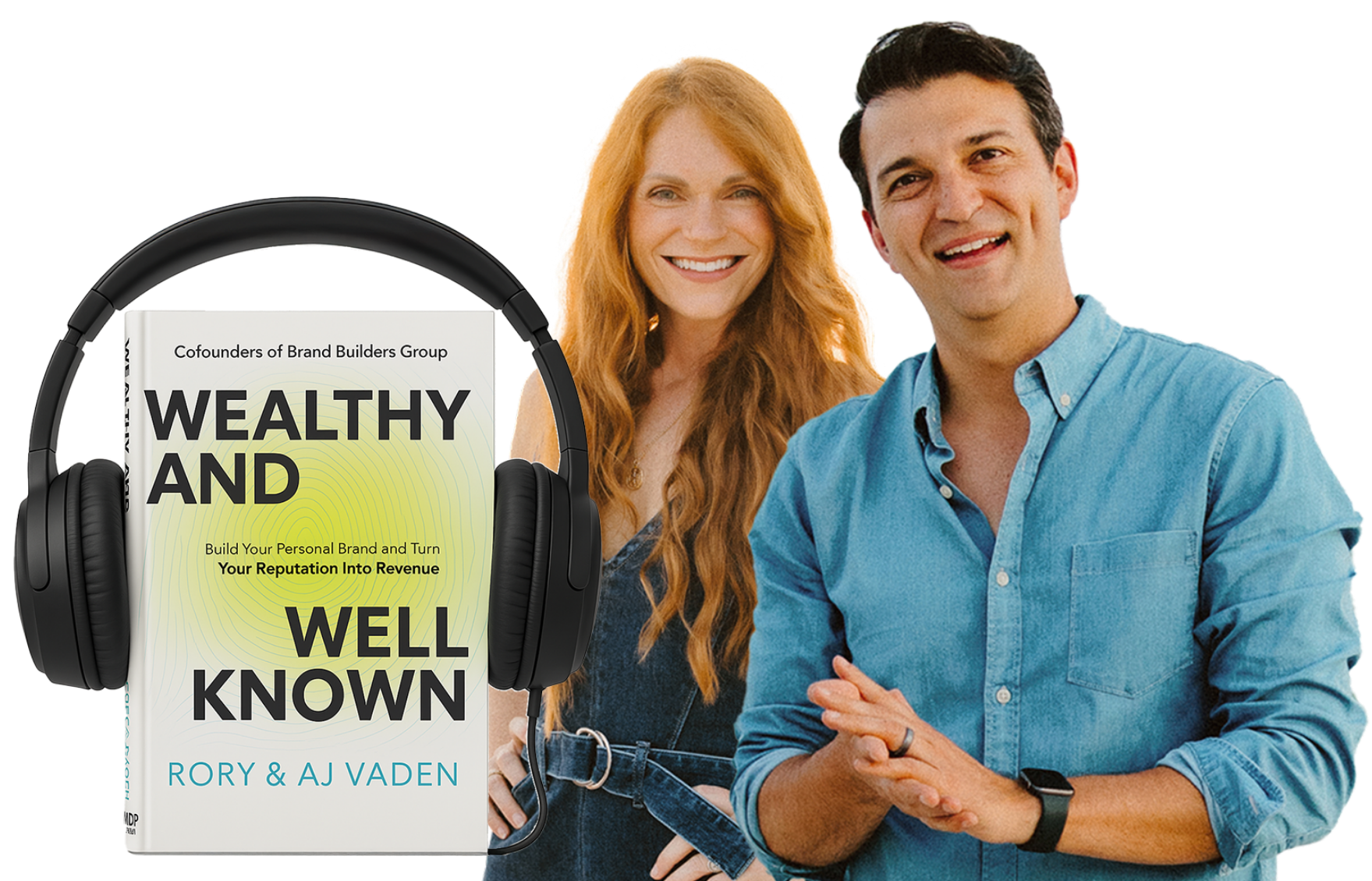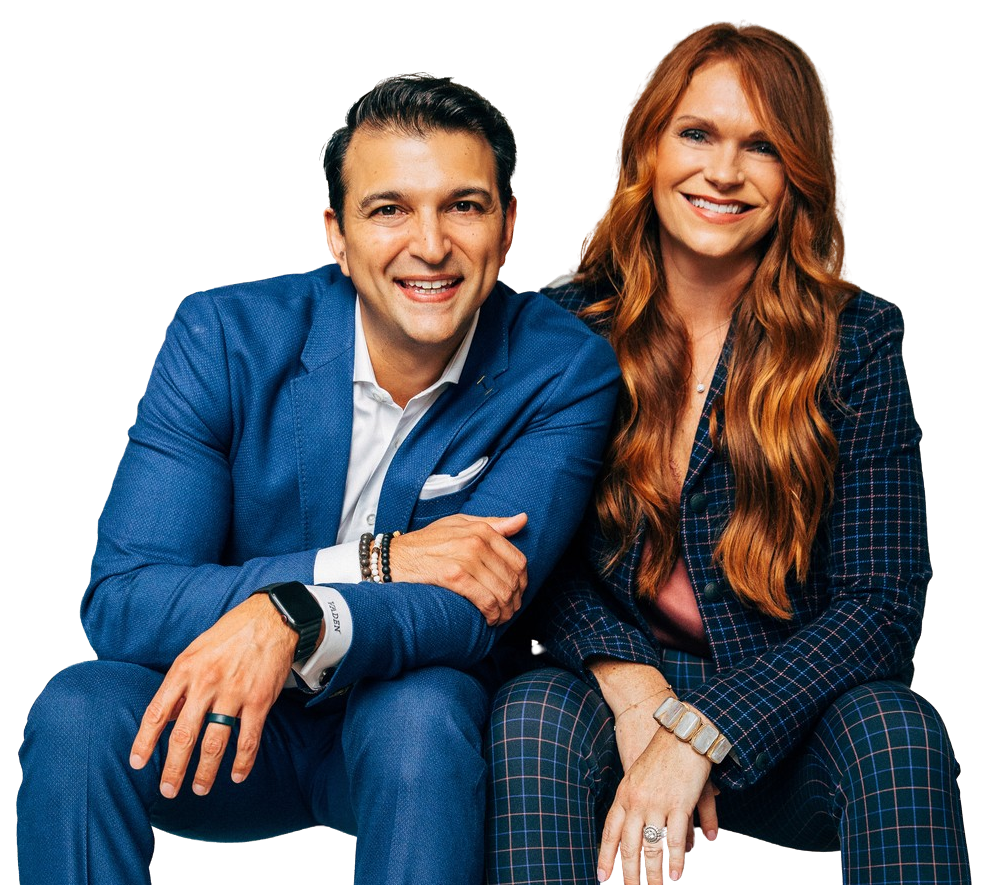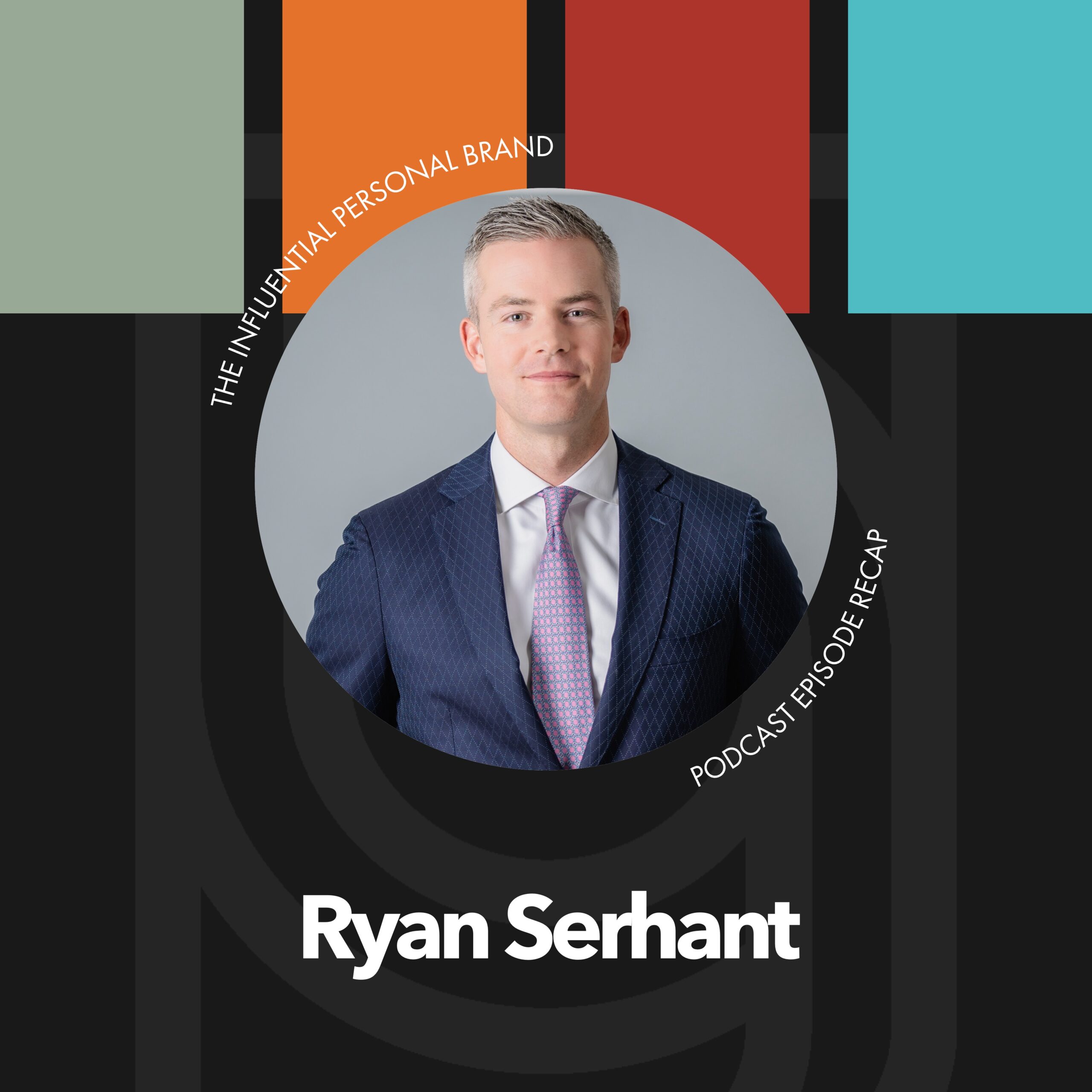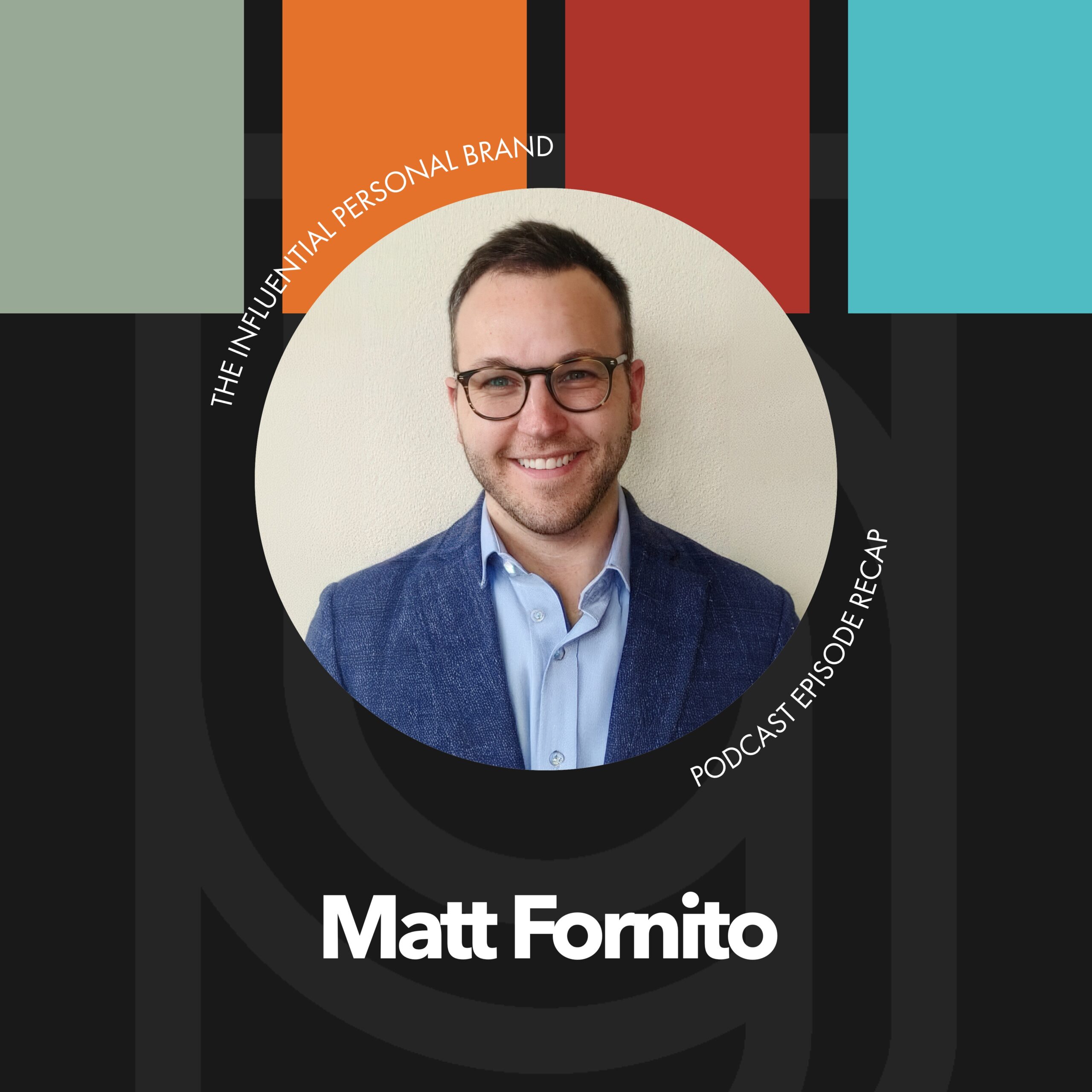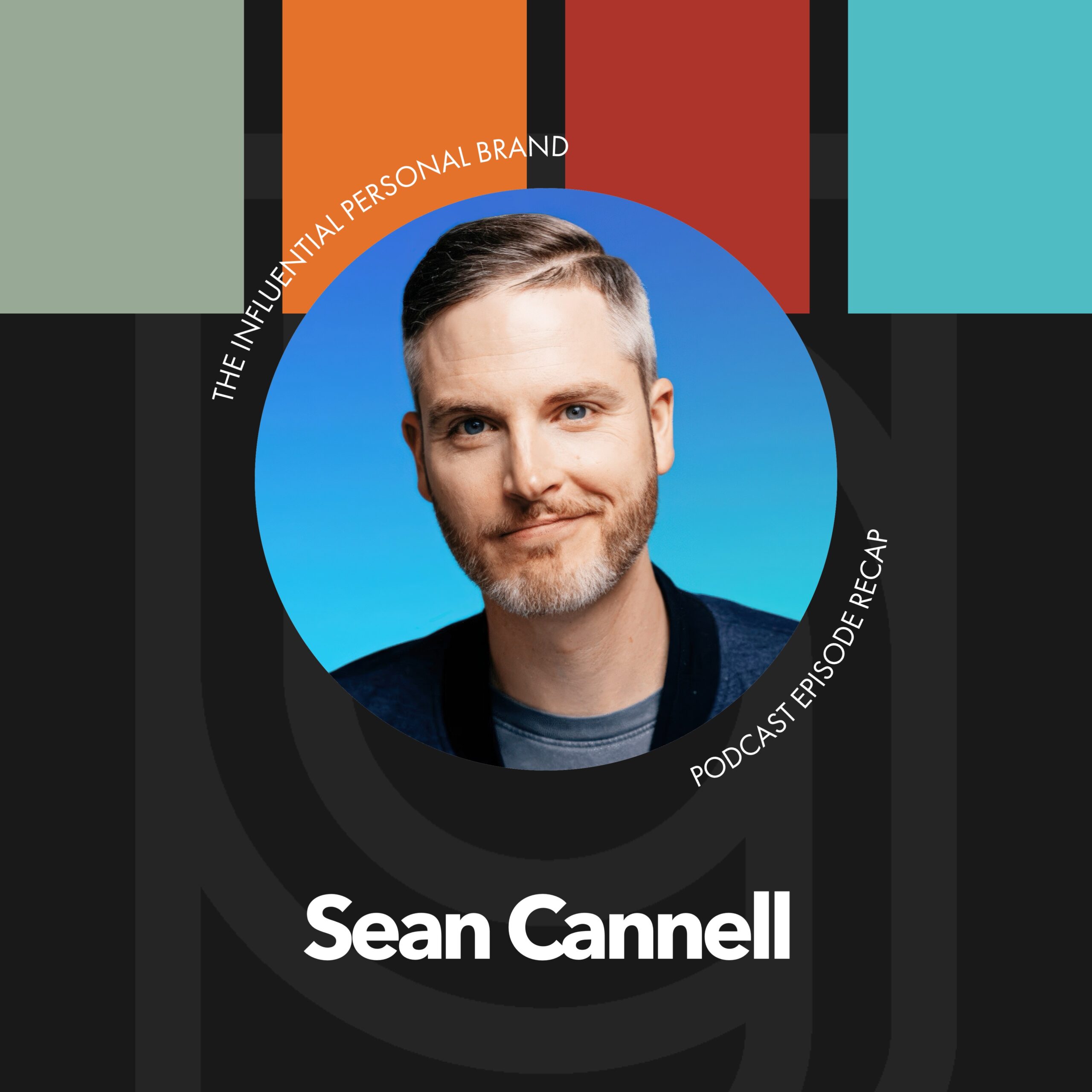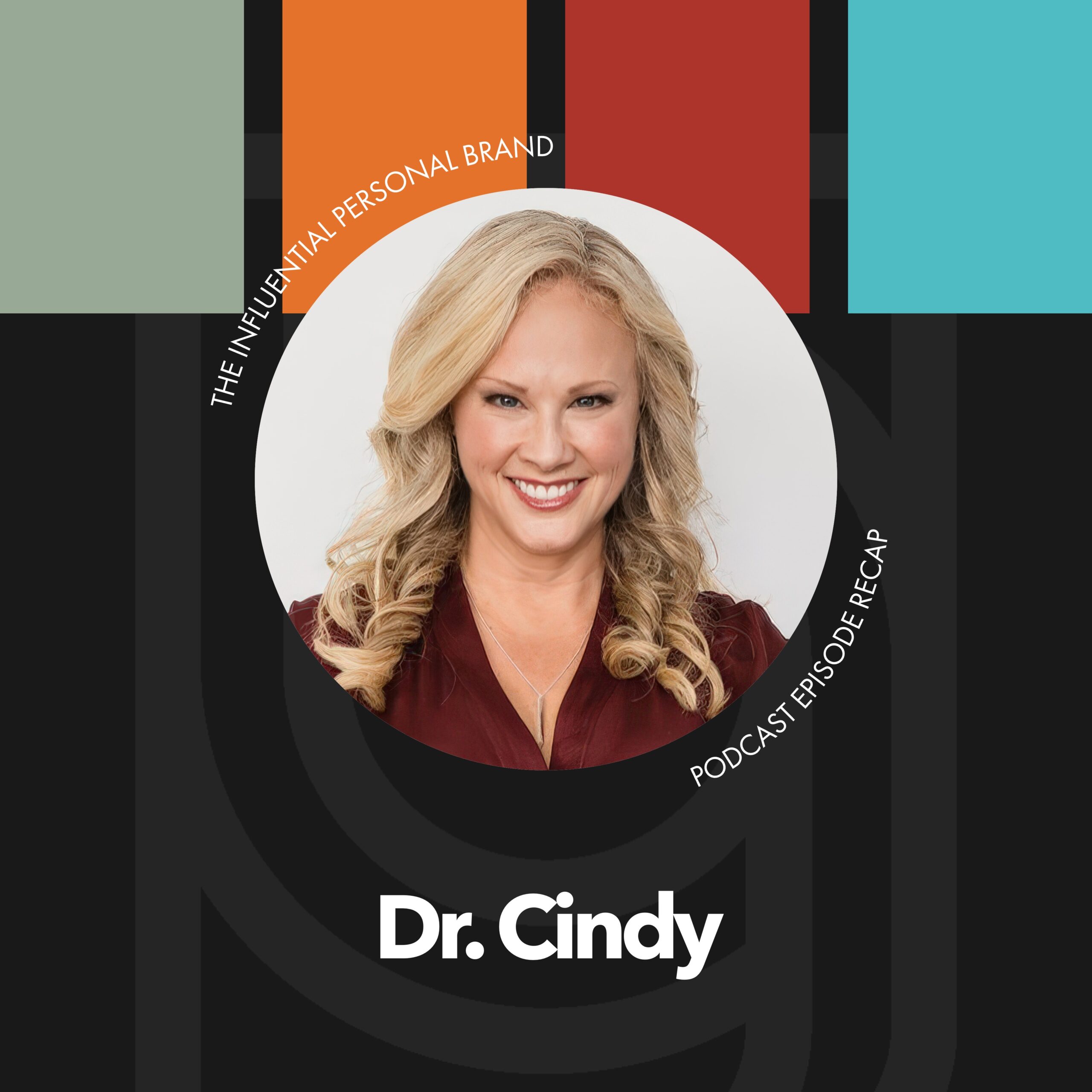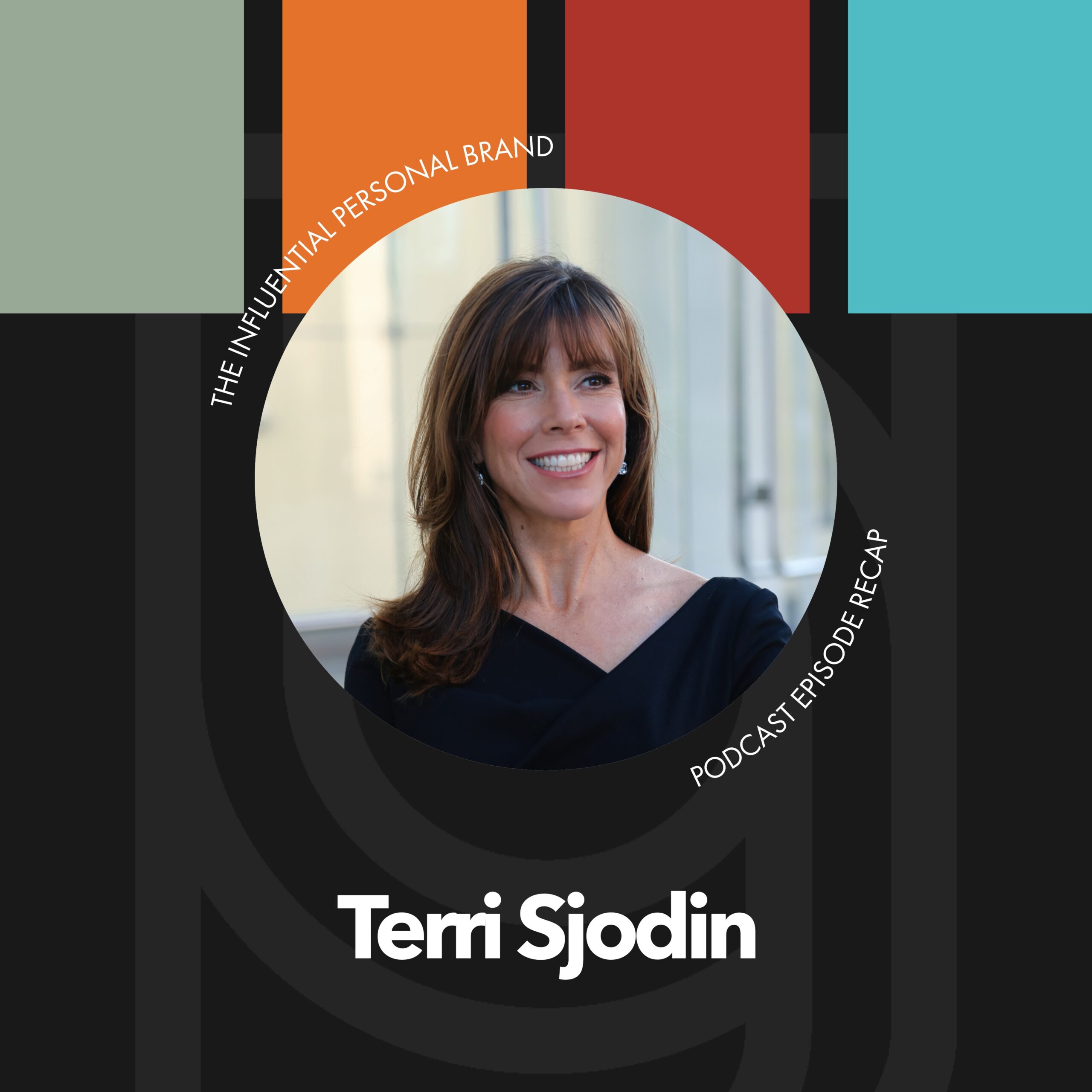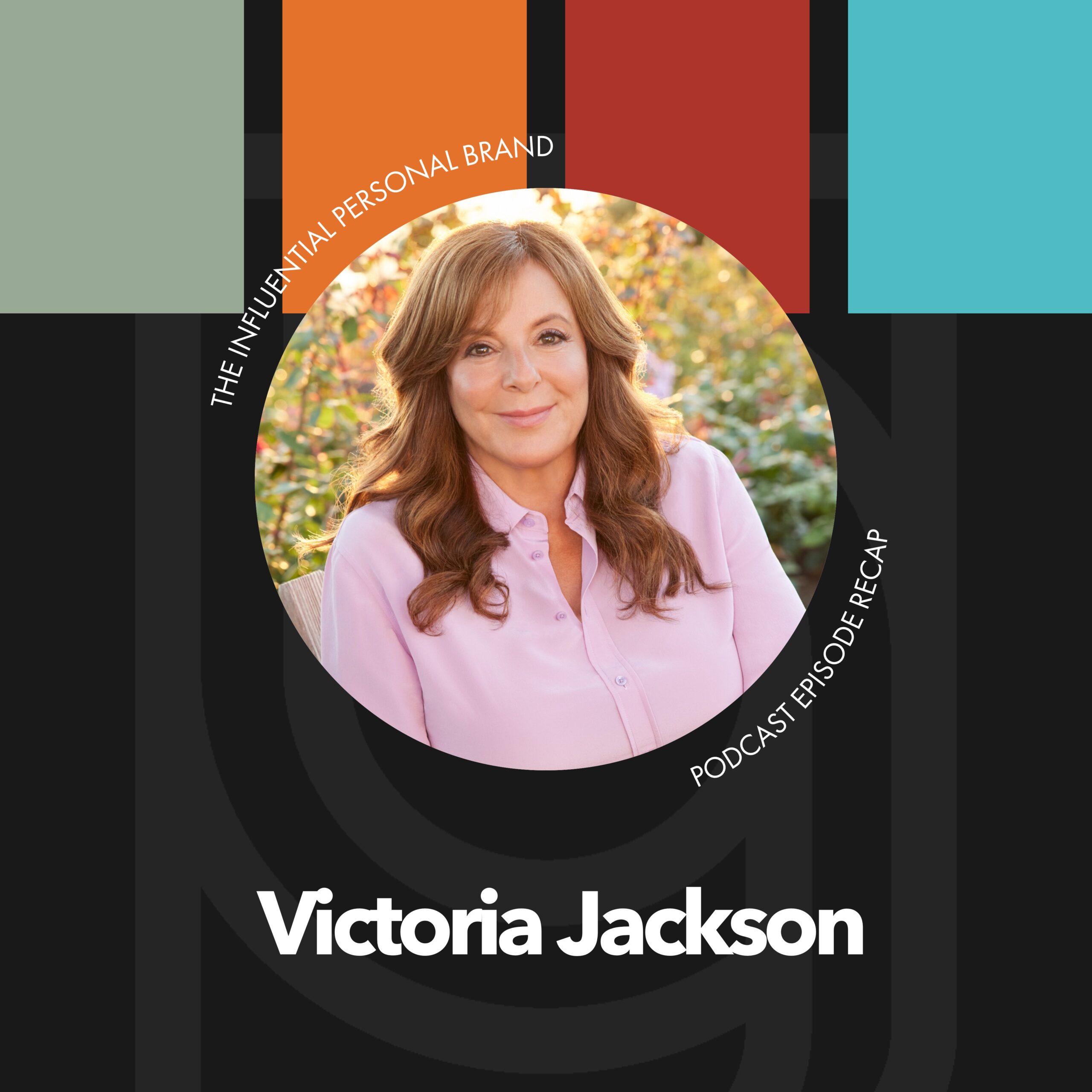RV (00:07):
Hey brand builder, Rory Vaden here. Thank you so much for taking the time to check out this interview as always it’s our honor to provide it to you for free and wanted to let you know the there’s no big sales pitch or anything coming at the end. However, if you are someone who is looking to build and monetize your personal brand, we would love to talk to you and get to know you a little bit and hear about some of your dreams and visions and share with you a little bit about what we’re up to to see if we might be a fit. So if you’re interested in a free strategy call with someone from Martin team, we would love to hear from you. You can do that at brand builders, group.com/pod call brand builders, group.com/pod call. We hope to talk to you soon.
RV (00:55):
Anytime I come across someone who has sold their company for a B billion or has made a billion, it grabs my attention. I have to admit not because I want anything from them. It’s just like at that scale, you’re talking about somebody who has done something real, real big, and that is what Lisa BIU did as the co-founder of quest nutrition with her husband, Tom Bilyeu, who I have recently become, I guess, friends, acquaintances of, of ours through a various number of different things, not the least of which is Lisa’s recent book launch, which is what we were just talking about here and had a chance to interview her on and, and to give you access to her, which is pretty awesome. It’s not, not easy to get access, you know, sometimes to, to people that are, are high profile like that.
RV (01:48):
And I, I loved it. I have loved my interactions with Lisa and Tom. There haven’t been a ton of ’em, you know, little messages here and there. That was probably the longest dedicated conversation. I had with Lisa about her content specifically, and, and I, I had never really heard the full story from her. I had interviewed Tom years ago on my old podcast that we sold a few years back, right. When they were started, but never really have had a, a focus conversation like that, like just did with Lisa and man. She’s awesome. Like I started had fallen her on social. I mean, she’s spicy, she’s spicy. And I, I, anyways, I just think she’s super cool. I hope that you enjoyed it. If you didn’t listen to it, go listen to the interview again. It’s just like, it’s not every day that you can just access the mind of somebody who’s operating on that scale.
RV (02:48):
And we come across a fair number of ’em actually at brand builders group. We’ve we’ve had a few of ’em on our podcast. Jamie cur Lima is another friend that comes to mind. We interviewed her, she sold her company for a billion dollars to L’Oreal. And that was also amazing story. And actually Lisa and Jamie are friends. So you know, small circles, it’s a small world especially I think the, the more successful you become the smaller the world, the, the world even gets. So I wanna share with you as part of this recap, these three of my takeaways from this specific conversation that I just had with Lisa, which are things that I’ve, I’ve never have never hit me in, in things that I’ve heard her say or, or learned from her before. And so I’m excited to share those, share those with you now.
RV (03:36):
And the first one is so simple, but this is so important and so powerful. And so edifying to what we teach all of our members. And, and it’s, it’s such a small thing that you probably missed it in the conversation, but that’s why I want to come back right now. I wanna highlight it with a big mental high. I wanna make this a salient point to go. Don’t miss this. This is huge. It has huge implications. It’s so small though. It’s so easy to step over this and you’re gonna, you’re gonna think I’m silly, cuz I’m making such a big deal out of this, but I’m telling you, this is one of those things that you will here. You won’t notice it. And yet this one little tiny tidbit can change everything for you. And here’s what she said. She said, when we first launched our product, which was quest these health bars, she said, we sent them to people for free.
RV (04:41):
We sent the, we sent influencers free product and it was fascinating to me because those of you that are in our, you know, monthly members of ours or you do private brand strategy sessions with us, you know how we’re saying all the time, the fastest way to take someone from a complete stranger to lifelong fan is a one hour presentation. And so what you have to do is you have to go speak for free. And this is what I did. I spoke 304 times, 304 times. I spoke for free before I ever got paid 300, four times. And we used this analogy in inside of our, our train inside of our course, like our official coursework. And we talk about chicken on the chicken, on a stick, right? Because when you go through the food court, they give you a piece of chicken on a stick, which why do they do that?
RV (05:34):
Because if you’ve never heard of me, you’re not familiar with me. If you don’t know my product and as it relates to your personal brand, if I don’t know who you are, if I’ve never seen you, I, I Don recognize you, letting me sample you for free is the fastest way to make me a believer. And so you have to give your product away for free. Like you have to give your service away for free. And it’s like, when people first start they’re, they’re so nervous about like, no, I, I, I have to sell this to everybody. And it’s like, when you’re just beginning, it should be the opposite. It’s like, you’re just begging people and you’re giving it away for free. And my, of Damon, John I heard Damon John, one time, we shared a stage at an event about a year ago.
RV (06:23):
And, and Damon was telling this story about how he got LL cool J to wear FUBU. And he just like gave it to him and then took a picture of him wearing it. And it was like such a pivotable point in their journey. And like, you have to, you have to give away your service for free. The newer you are. And the lesser known you are, the more that this matters. And it’s so simple, right? And we overlook it. But when you don’t get paid in money, you get paid in testimonials, you get paid in feedback, you get paid in credibility, you get paid. And you know, sort of like this, these early test pilots that you can, you can adapt and, and, and modify your offering and you get paid in referrals. So if you’re just starting out, you might have to flip this switch and, and, and go from like, how do I sell everybody to instead going, how can I give this away for free?
RV (07:17):
And just get a lot of people, just get a lot of people hooked on this. And, and that applies whether you’re selling, you know, FUBU as a clothing line. And you’re Damon John, whether you’re Jamie Kern, Leman, you’re selling makeup, whether you are Lisa BIU and Tom BIU and you’re selling candy bars, or whether you’re a personal brand, trying to get someone to book you for a speech or hire you for coaching. This is our whole model at brand builders group. Like you’re you’re, you don’t pay anything for this podcast. It’s extremely difficult to get someone like Lisa bill, you to, to, to spend this time. Like we spend a lot of money and a lot of energy and a lot of resources trying to bring people like this to you for, and then on social media, it’s free. And then we have all these free trainings.
RV (08:03):
And what does all of our free content do? It drives you to request a free call with our team. We do the first coaching call for free. Why? Because we know that if you don’t know us, you’re not familiar with us. We don’t have millions of followers, but if you, if you hang around long in a, after you go, you know what? I actually like what these people are about. I think I am gonna talk to them. I think I am going to request a free call, which by the way,
[email protected] slash podcast. You can request your free call and we do the first free call. We do the first free coaching, first coaching call with everybody for free so that they can get a sense of what it means to work with us and how we can add value. You gotta do the same thing.
RV (08:45):
People gotta sample you. They gotta, they gotta taste your product. They gotta know who you are. They gotta have an experience with you. And so that happens with content marketing. It happens, you know, with speaking, I mean, I don’t speak for free very often anymore these days, but I’ve been doing it for 20 years. But in the beginning, that was all we did. That’s how we built our, our whole first company was an eight figure business. Our whole model was that we sent people out and they would go speak for free in, in offices, like to small groups of five people, people, three people sometimes, and they would speak for free for a chance to earn trust. And, and I just don’t miss that, right? Like, especially if you’re just starting out the earlier you are in your process, the more this matters or the earlier you are in a new product or a new revenue stream or a new business venture, this really, really, really matters.
RV (09:38):
The second big takeaway for me. And this came up several times in the con conversation in several different ways. And you know, I’ve kind of heard of this idea before, but not so sharp and not so keen as when Lisa was talking about this, you could hear, you could hear that this was like a part of their philosophy. Like this is a part of their culture and it hit me cuz I was like, wow, that’s, you know, this is important. I know it’s important, but I’ve never quite, you know, captured it like this. What she’s saying, you know, is, is she said in her words, when she was talking about their nutrition bar, she was saying, how do you make something yummy for people to eat? That actually happens to be good for them. right. Like that was how she said, how do you make something yummy for people to eat?
RV (10:24):
Which actually is good for them. And then later when she was talking about how they started with the, the, this, how they started impact theory and this whole new, this whole new brand and this whole new company, it was basically about this idea of how do we create enter? How do we create content that’s impactful and inspiring and yet make it so entertaining that people want to watch it? What, what a great as what a great it’s kind of like going, how do I create the, the cure for cancer that tastes like chocolate? How, how do I you know, we, we kind of try to do this with take the stairs with my first book which still to this day, of course I speak a lot on and that’s the message of self-discipline and we go, how do we make self-discipline more, more palatable and, and easier, you know, more digestible and, and, and easier and fun even for people to embrace.
RV (11:27):
And that’s really important because there is, there’s the truth, like there’s principles that change lives and there’s truths that make a difference for people. But then you have to package it in a way that makes it digestible. You have to, you have to solve the real problem. Right. And a lot of times that requires work or at least discipline, or at least the unfamiliar, right. To change your life, you have to do something different. But the, the part that’s so inspiring here is in their, in their sense, it was, it, it wasn’t just the physical packaging, but it, it, it was the physical packaging. And then also the taste right. Of the actual bar. So it’s like, how do you take your business? I, and your personal brand, which solves a problem in the world and how do you put it inside a rapper, right?
RV (12:18):
Like it might be medicine. This, this makes me think of, you know, how do you get a dog to eat medicine? You wrap it in peanut butter, right? And so the dog eats the peanut butter and they take the medicine. Or, or you, you do the, you could do this, you do the same thing with kids, right? Like you mix the medicine up inside of something else. So you gotta have the, the transformation in people’s lives. That’s your content like that’s the inside of the book. But then the, the title of the book has to be enticing and your whole branding, your whole positioning. I remember talking to Louis, how one time about photography? You know, somebody asked him this question. I, I was actually, I, I, I wasn’t a private conversation. I was in a room and he was, he was speaking. And somebody asked him, what’s the most IM like, what’s the most important part of building a personal brand.
RV (13:06):
And he said photography. And that blew me away. I was like, what? That’s, that’s crazy. Like what a weird answer. And, and he talks about it because he think the photography you know, the way that he thinks about it is it is, it, it, it captures this energy, the, the, the image portrays emotion and energy, which is what communicates, what the brand is all about. And I was like, wow, that’s deep , but it’s, it’s this same, it’s this same mindset of going, like, it’s not just CRE ying something that transforms lives. It’s creating something that transforms lives and then packaging it in a way that everybody wants it. That’s genius. So simple. So genius profound though. And so that’s a good question for you, right? Is you go, how do you make your content, you know, life changing, but also entertaining? How, how do you make it truth, but also have a scintillating title?
RV (14:02):
How, how do you, how do you make it to where it’s, it’s, it’s what they need, but it’s also what they want. And to me, this is sort of the difference between you know, for those of you that are brand builders in finding your brand DNA, where we do talk about finding your uniqueness. We refer to all of that as internal Mar moniker, internal messaging, internal alignment, your uniqueness is internal. But then in phase two, we talk about marketing, which is external, and that’s the marriage of this, right? It’s, it’s sort of like to use the quest nutrition bar since that’s the topic here is going there is there’s the guts of the bar, but then it’s wrapped in chocolate and then it’s wrapped in beautiful packaging. And that’s what you wanna do for your message for your, you know, for whatever your personal brand is like for the, for the most part, success is fundamental.
RV (14:52):
Success is built on fundamental truth. And so you’re finding a way that’s, that’s the art of marketing is wrapping fundamental truths in a new and exciting and enticing way. So I love that. And then the third thing, the third thing was when Lisa said, even to this day, she’s the chief creative officer at impact theory and hearing her talk about her passion for storytelling and movie making and, and video editing hit me hard. And I, and I think I’ve missed the boat here. I’m, I’m quite confident that I have the least not I’m nowhere near the way that sh she thinks in her mind is, you know, like when we create content, I’m going, how do we create useful content? But she is going, how do we edit this in a way to where it changes people’s emotion. If you go back and listen to the recording, she said, what I love about V is you have the ability to change a person’s emotion with video, right?
RV (15:59):
So she’s not just, she’s not just asking the question, what’s the most efficient way to transfer an idea. She’s also saying, how do I transform their emotion? And that is like, almost like science and art, right? It’s going, I wanna, you know, I’m, they’re in the business of, of helping people with great ideas, but it’s not so much that the idea itself is maybe, you know, original or, you know, groundbreaking, at least it’s not, it’s not like they’re sharing things that nobody else has ever said, but they’re doing it a in a way that is in literally inspiring. It moves people emotionally. And, and so, you know, this is, this is where the connection point is for us, where in our world class presentation, craft training. So we’ve got, you know, all together inside a brand builders group, we have 14 different two day trainings, 14 different two day experiences.
RV (16:54):
One of ’em is called world class presentation craft, where we talk about how do you construct the perfect keynote? And one of the, you know, the, the central premise of, of that whole training is that you have to learn to move the audience emotionally. You have to move them emotionally. There’s these things that you, there’s so many things you can do with a speech from the way it is structured to the way that the slides are laid out, to the way you use the stage, to the way you tell the stories, to the way you develop the characters, to the way you, you write jokes and add punchlines to the way that you use your voice, your body, your facial expressions, there’s all of these things. And we go through all of these different techniques. And the reason all of them are there is they are arrows in your quiver.
RV (17:36):
And the objective them is to move people emotionally. But the thing that has never quite clicked in my head like it did listening to Lisa was going, oh, that same level of meticulous crafting that I would do with the speech that I’ve been doing my whole life with speaking is the same amount of crafting and effort and energy that needs to go into video editing. And I’m going, yeah, I I’ve been missed the boat there, right? Like, to me, I’m just going, how do I get someone to like, edit this video and like put a bumper on it and, and some music underneath it, but not thinking about it as like, what is the real art here of what is the emotion we’re trying to create? And how do we use imagery and text? And what’s being said, and voiceover and transitions and all of the things, and you can just tell that how, how much she has crafted and, and how much she, you know, they think their, their team and in their brain.
RV (18:38):
And, and that they’re, they’re doing the art of not just communicating information, but doing it in an inspiring, inspiring way to get more views sure. Of, of course, to get more subscribers. Yes, of course. But it’s deeper than that. It’s to actually make an impact. The reason you have to work so hard at crafting your message is because the more well crafted it is the, the better packaged it is, the more entertaining it is. The more likely it is to get through the, the more likely you are to break through somebody’s defense mechanisms in their walls and these barriers that they put up, and the more likely you’re able to impact them. So, and that takes work and energy and, and craft. It’s not just, you know, throwing something up. It’s, it’s, it’s actually thinking about it and constructing it with, as a gift for the person who’s receiving it, not just spewing out like what’s on your mind, but actually reverse engineering, the construction of your message so much to the extent that it is a gift for the other person on the other end, who’s receiving it.
RV (19:53):
That’s beautiful. That is art. That is personal branding at its finest, far above vanity, far above likes and far above just information. It’s truly being centered on the mission of serving people and changing people’s lives. So I hope that you see a rising commitment from our team and a desire at least to be creating content that is moving and useful and powerful and practical and applicable for you in your journey here on this podcast, every single week. I’d love it. If you shared this episode or any of our episodes with someone who you think needs to see it that you’re checking out our free trainings that we have at brand builders group to.com and then you just stay plugged in until you’re ready to request a free call. And then hopefully our team will get the privilege of talking to
[email protected] slash podcast, and then that we get a chance to help you start to craft your personal brand journey. Thanks for being here. We love you. We’re grateful for you. We’ll catch you next time on the influential personal brand podcast.

